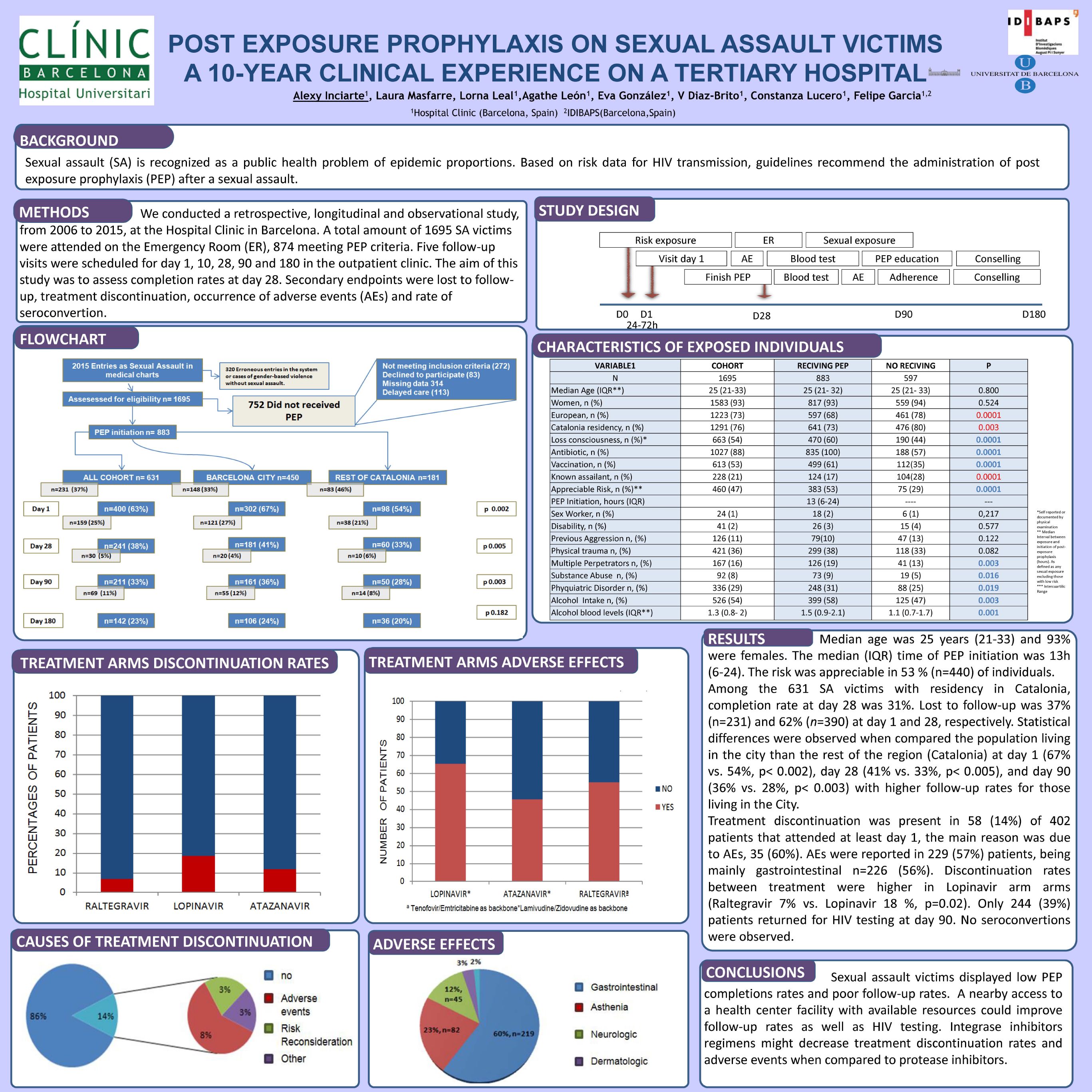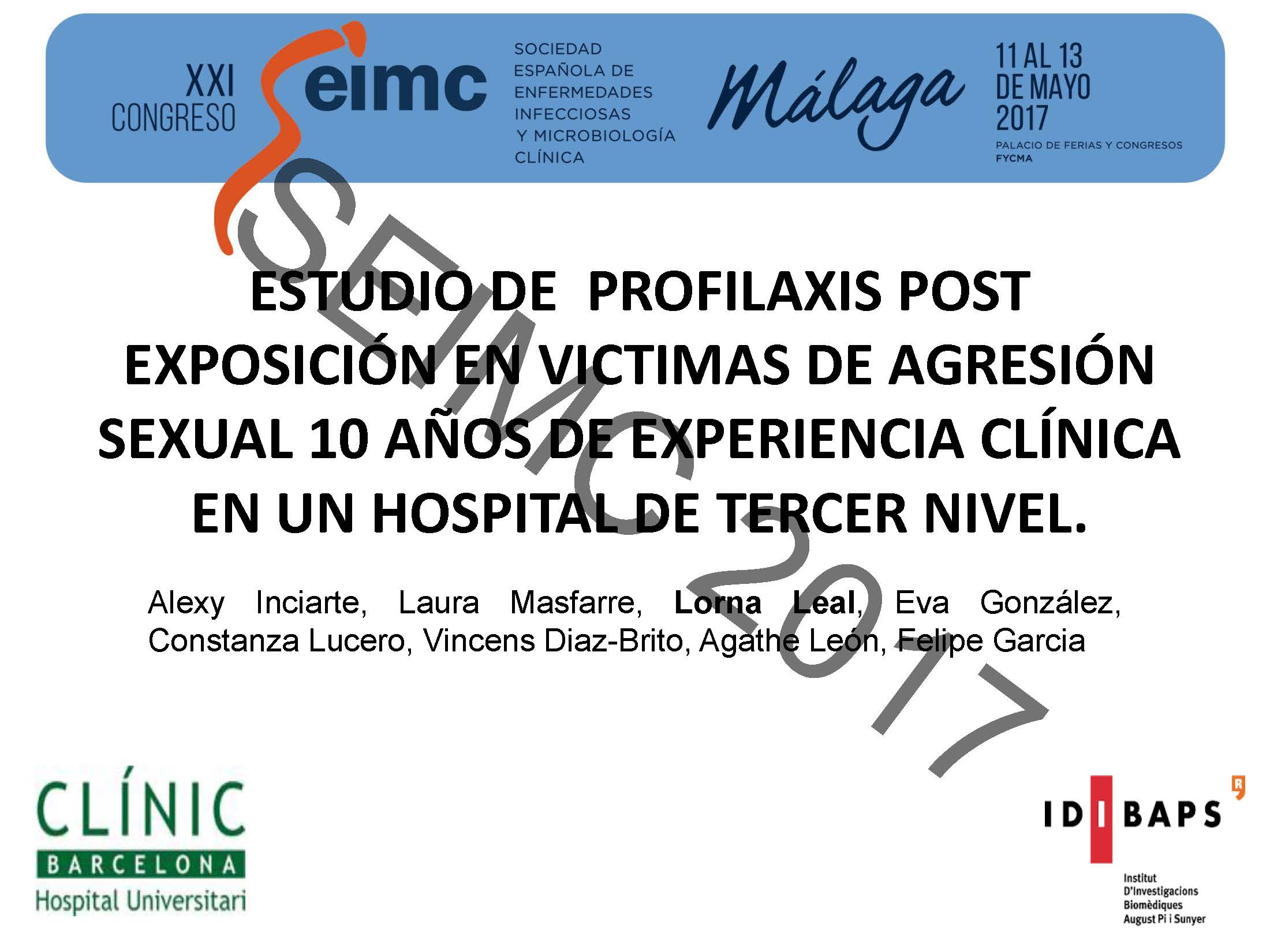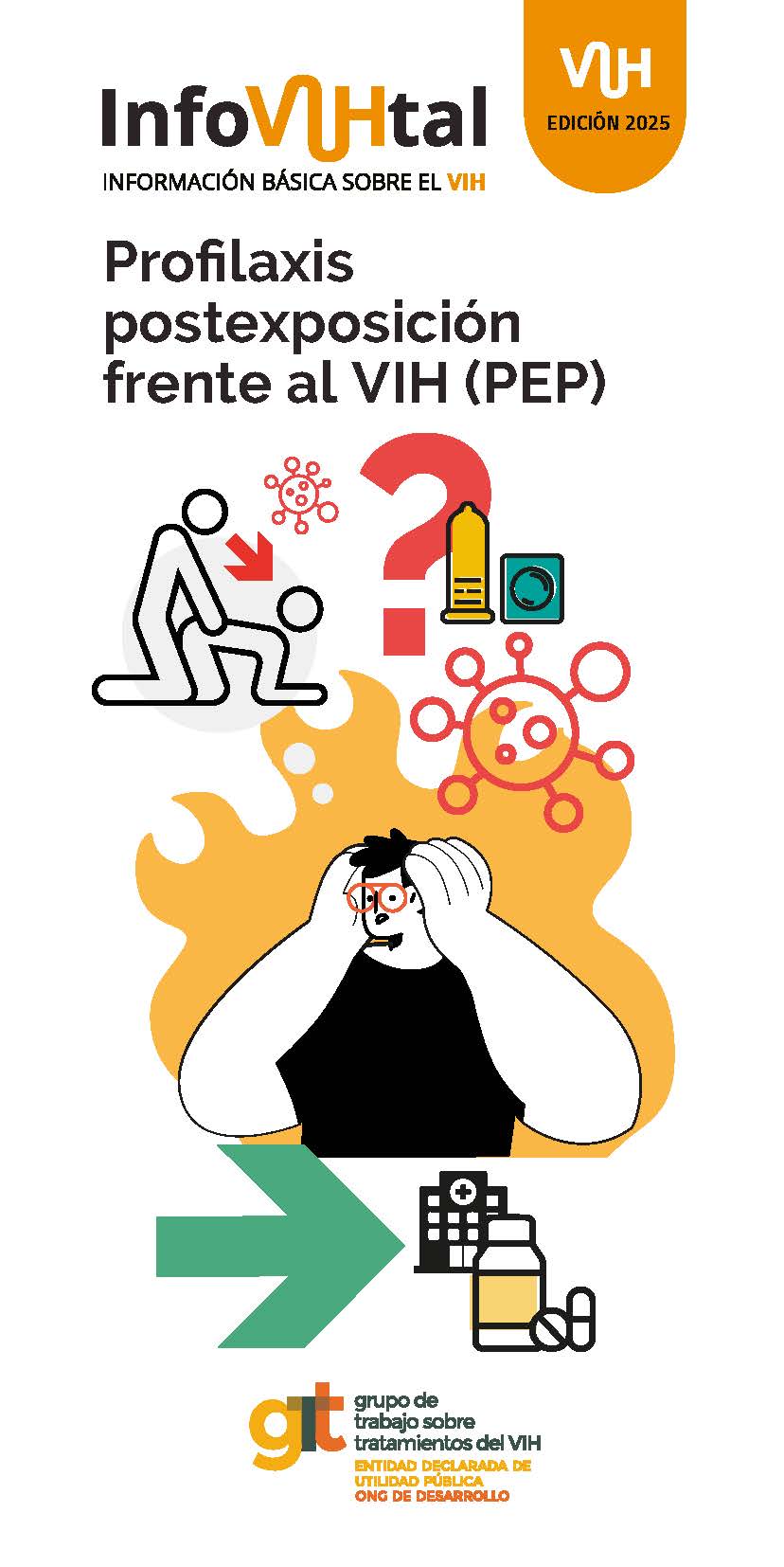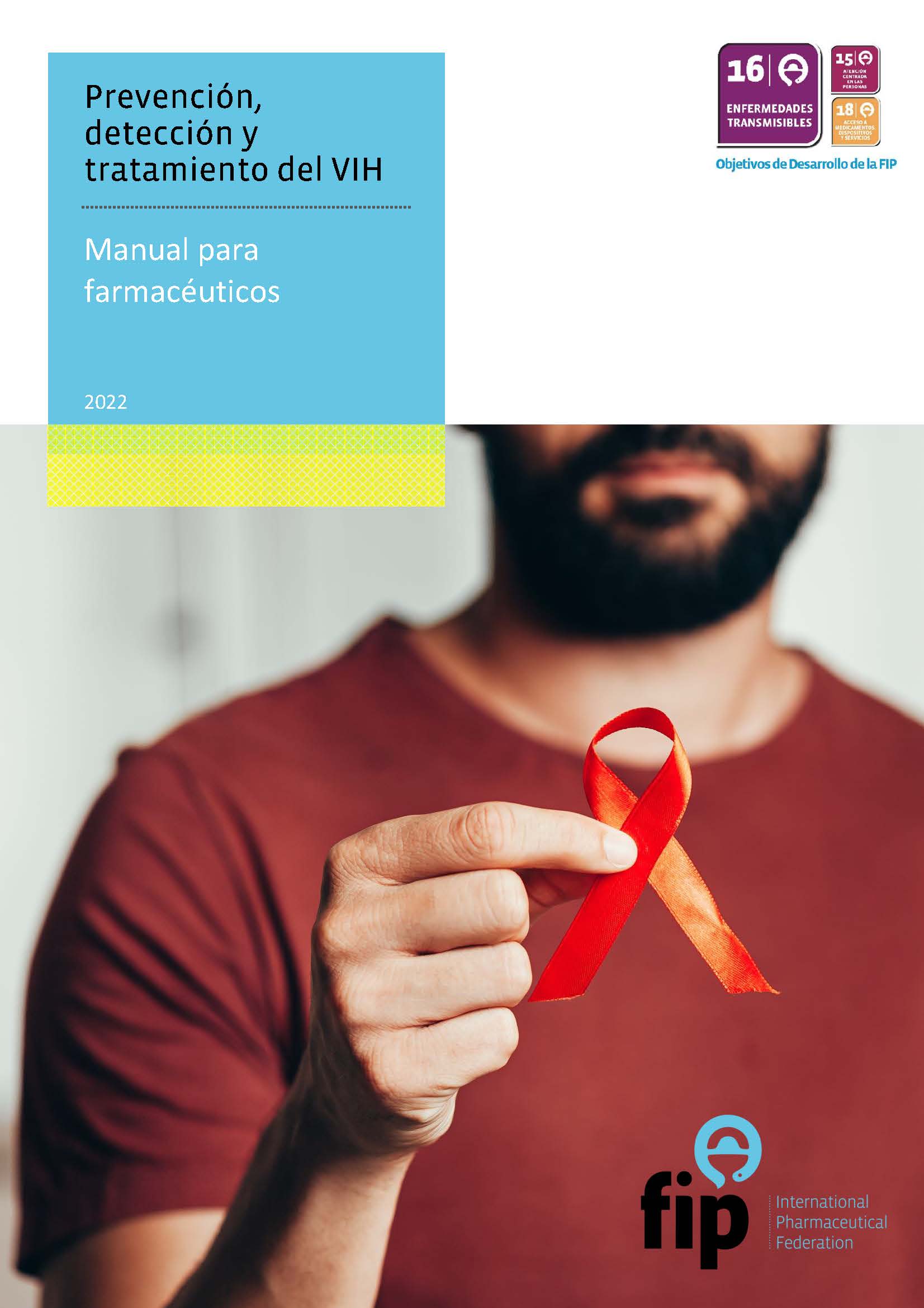Catálogo general VIH

Post exposure prophylaxis on sexual assault victims a 10-year clinical experience on a tertiary hospital
Resumen
Background: Sexual assault (SA) is recognized as a public health problem of epidemic proportions. Based on risk data for HIV transmission, guidelines recommend the administration of post exposure prophylaxis (PEP) after a sexual assault. Methods: We conducted a retrospective, longitudinal and observational study, from 2006 to 2016, at the Hospital Clinic in Barcelona. A total amount of 1695 SA victims were attended on the Emergency Room (ER), 883 meeting PEP criteria. Five follow-up visits were scheduled for day 1, 10, 28, 90 and 180 in the outpatient clinic. The aim of this study was to assess completion rates at day 28. Secondary endpoints were lost to follow-up, treatment discontinuation, occurrence of adverse events (AEs) and rate of seroconvertion. Median age was 25 years (21-33) and 93% were females. Population residency was Barcelona province for 73% (n=641) of the victims. Assailant was known only in 15% (n=131) of SA victims. Traumatic lesions related to SA were observed in 295 patients of 778 (37.9%). Loss of consciousness was presented in 53.3% (n= 465) of the cases. The most common drug associated with the events was alcohol 42.3% (n=370). The median (IQR) interval between exposure and presentation at ER was 13h (6-24). The level of risk was appreciable in 53 % (n=440) of individuals. Among the 631 SA victims with residency in Barcelona area, completion rate at day 28 was 31%. Lost to follow-up was 37% (n=231) and 62% (n=390) at day 1 and 28, respectively. Treatment discontinuation was present in 58 (14%) of 402 patients that attended at least day 1, the main reason was due to AEs, 35 (60%). AEs were reported in 229 (56%) patients, being mainly gastrointestinal n=196 (48%). Only 241 (38%) patients returned for HIV testing at day 90. A single seroconvertion was observed in MSM patient. Conclusions: Follow-up and compliance rates on sexual assault victims were poor. Strategies to increase follow-up testing should be promoted. In addition, more than 50% of the patients suffered EAs, being the main reason to discontinue PEP. Drugs regimens must be reviewed in order to overcome this relevant issu
Autoría:
INCIARTE, Alexy; MASFARRÉ, Laura; LEAL ALEXANDER, Lorna; LEÓN GARCIA, Agathe; GONZÁLEZ, Eva; DÍAZ BRITO, Vicens; LUCERO, Constanza; GARCÍA ALCAIDE, Felipe
Autoría institucional: Hospital Clínic i Provincial de Barcelona; IDIBAPS (Institut d'Investigacions Biomediques Agustí Pi i Sunyer) (España)
Autoría institucional: Hospital Clínic i Provincial de Barcelona; IDIBAPS (Institut d'Investigacions Biomediques Agustí Pi i Sunyer) (España)
Ficha bibliográfica
- Año de publicación:
- 2017
- Descripción física:
- [1] p.
- Formato:
- Folleto
- Tipo de documento:
- Coloquios y ponencias
- Notas:
- Póster presentado en el IX Congreso Nacional de GeSIDA, celebrado en Vigo del 28 de noviembre al 1 de diciembre de 2017.
- Más información:
-





